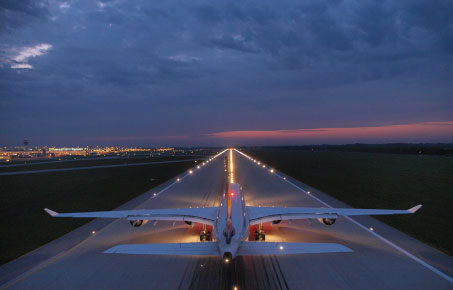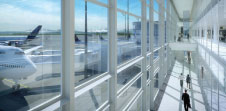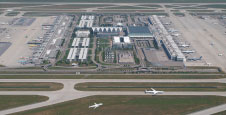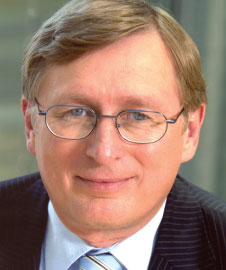 The approval granted by the District Government of Upper Bavaria is perhaps the most noteworthy development at Munich Airport since its relocation in 1992. Since the opening of the new hub almost 20 years ago, passenger traffic has increased three-fold to almost 35 million in 2010, and this growth is continuing, as displayed by a year-on-year increase of +13% for the first six months of this year.
The approval granted by the District Government of Upper Bavaria is perhaps the most noteworthy development at Munich Airport since its relocation in 1992. Since the opening of the new hub almost 20 years ago, passenger traffic has increased three-fold to almost 35 million in 2010, and this growth is continuing, as displayed by a year-on-year increase of +13% for the first six months of this year.
The airport’s forecast indicates that by 2020, total air traffic movements (ATMs) will reach 536,000 – rising from the current figure of 390,000 – adding further justification to the approval of a new runway, which is expected to be complete by the end of 2015.
“With the capacity limitations of the two-runway system, we are already facing the problem of struggling to meet the demand for additional flights,” Kerkloh explained. “The current capacity of 90 schedulable take-offs and landings per hour, which is actually an outstanding performance for a two-runway system, is already stretched to the utmost during peak traffic periods and we cannot offer any slots for additional take-offs and landings.”
As a mark of the airport’s dedication to ensuring the most efficient operations, Munich Airport was the first to adopt Airport Collaborative Decision Making (A-CDM) when the project was launched in 2004, ahead of the full implementation in June 2007. The aim of the A-CDM Action Plan – which is driven by a collaboration between ACI EUROPE, EUROCONTROL and CANSO – is to improve the operational efficiency of all airport partners by reducing delays, streamlining the predictability of events during the progress of a flight and optimising the utilisation of resources. More than 30 airports are already engaged in the project.
Munich Airport’s A-CDM implementation has also contributed to its certification under Airport Carbon Accreditation at the ‘Optimisation’ level. Having successfully engaged third parties on the airport campus to reduce their carbon footprint, Munich is the first German airport to achieve this level under the accreditation programme.
Increasing runway capacity
At present, Munich Airport shares a significant portion of all long-haul flights to and from Germany with Frankfurt Airport, but without any expansion, catering for additional slots or capacity is impractical. “Due to the very limited opportunities for airlines to overcome these bottlenecks by using larger aircraft or rescheduling flights, they are simply unable to launch many potential new connections to and from Munich,” Kerkloh said.
The addition of a third runway, however, will increase the capacity at Munich Airport to 120 schedulable take-offs and landings per hour. Kerkloh continued: “As a result, the planned capacity expansion project will give Munich Airport, as well as the airlines operating here, the necessary planning certainty for steady increases in traffic, thus enabling them to meet rising demand, even in the long term.
“In the year 2011, we are expecting more than 37 million passengers (an increase of more than +7% compared to 2010). The forecast for the year 2025 is about 58.2 million passengers at Munich Airport.”
Key Facts & Figures
Annual Passengers: 34.7 million
Annual ATMs: 390,000
Maximum movements per hour: 90
Hub for: Lufthansa, airberlin, Augsburg Airways
Number of airlines served: 100
Number of destinations served: 225 (20 domestic, 156 European, 49 Intercontinental)
Number of stands: 172
Number of employees: Approx. 30,000
Number of companies on the airport site: Approx. 500
*based on 2010 full-year figures
Even though the airport is currently limited in terms of both terminal and runway capacity, the high level of its performance is reflected by the fact that it was this year recognised in the European section of the World Airport Awards, which are based on the views of more than 11 million travellers from over 100 countries.
Economic importance

FMG, the Munich Airport operator, is investing in a new Terminal 2 Satellite facility, along with the German flag carrier Lufthansa. FMG will foot 60% of the total €650 million cost, while the airline is covering the remaining 40%.
Considering the export-driven nature of Germany’s economy, the addition of the third runway is vital also to ensure that the infrastructure is in place to cater for the extension of international business links.
Kerkloh explained: “The Bavarian companies that rank among the global players in their industries keep the export quota of the economy at approximately 50%. Bavaria is among Europe’s top-performing regions and has an excellent reputation – as a globally respected research and development location, a hotspot for leading-edge technologies, an attractive trade fair venue and a highly efficient logistics hub.
“Moreover, Bavaria is number one among German states for tourism. To secure our future growth and prosperity and ensure that we are able to keep generating new jobs, we must maintain and expand our international business relationships. This will require an airport that is equipped to handle the demands of the future.”
T2 Satellite

Forecasts suggest that by 2020, total air traffic movements at Munich Airport will reach 536,000 – rising from the current figure of 390,000 – adding further justification to the approval of a new runway.
As part of this drive to ensure that Munich Airport can satisfy these future demands, Flughafen München GmbH (FMG), the airport’s operator, is also investing in a new Terminal 2 Satellite facility, along with the German carrier Lufthansa. FMG is footing 60% of the total €650 million cost, while the airline is covering the remaining 40%.
Terminal 2 itself only became operational in June 2003 but by the end of this year, it is expected to handle its capacity of 25 million passengers. Having been originally designed as a hub terminal for Lufthansa and its Star Alliance partners, the addition of the new satellite facility is a natural progression of the strong relationship between airport and airline.
The 123,000sqm facility will be directly linked to Terminal 2 and is due to become operational in 2015. “This will increase the annual passenger capacity of Munich Airport by 11 million to more than 50 million,” Kerkloh said. “At a later date, through a second phase of this building, we will be able to create space for an additional 6 million passengers per year.

Kerkloh: “The planned capacity expansion project will give Munich Airport, as well as the airlines operating here, the necessary planning certainty for steady increases in traffic, thus enabling them to meet rising demand, even in the long term.”
“With the first development phase alone, we will gain 27 new gate positions for aircraft, allowing passengers to move from the terminal to the aircraft or vice versa, without having to board a bus. As a result, in the area of Terminal 2, we will have more than 50 aircraft park positions directly adjacent to the building. This will raise the quality of our service in this regard to a level that can stand up to comparisons with other major European hubs.”
The expansion of both terminal capacity and ATM capabilities is expected to further cement Munich Airport’s status as a key growth market for the Star Alliance in Europe. In fact, Lufthansa alone has plans to introduce 155 new aircraft into service by 2017 thanks to investment totalling €15 billion. This, combined with positive traffic forecasts, a new satellite facility, and the addition of a third runway, makes for good reading not just for Munich Airport, but for Germany’s aviation infrastructure as a whole and, in turn, the wider economy.







